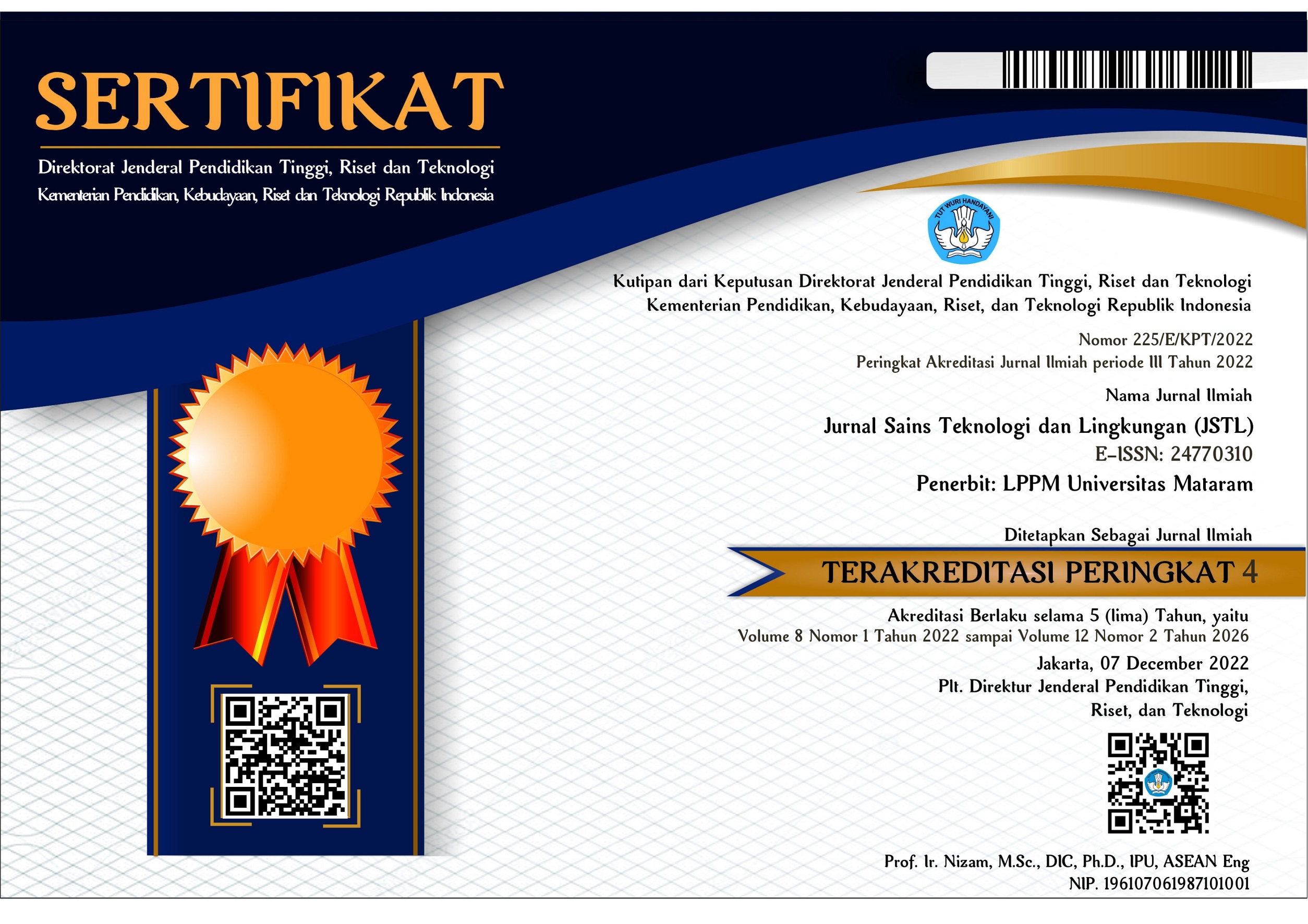Serbuk Biji Asam Jawa (Tamarin Dusindica L) untuk Pengelolaan Limbah Industri Cair Tempe (Studi Kasus Mataram)
Tamarind Seed Powder (Tamarindusindica, L) to Treatment the Liquid Waste Industrial of Tempe (Mataram case study)
DOI:
https://doi.org/10.29303/jstl.v7i2.193Keywords:
COD, Turbiditas, limbah industri tempeAbstract
Most of the tempe industry have not been equipped with a waste water treatment unit. It is usually a water soaked soybeans and soybean excess water is still discharged directly in the into the environment. Liquid waste industrial of tempeh contain high organic materials. One of the process for wastewater treatment is coagulation with the addition of a positively charged polyelectrolyte in tempeh wastewater as negatively charged. One of plants in Indonesia that can be used as an alternative coagulant is tamarind seeds (Tamarindus indica, L).it can be used for wastewater treatment is more economical. The aims of this experiment is to determine the optimum stirring time, optimum pH of the waste and optimum coagulant dosage for treatment of the tempeh wastewater with coagulant tamarind seed powder. The experiment studied were stirring time, the pH of thetempeh wastewater and coagulant dosage to the percentage decrease in turbidity and COD (Chemical Oxygen Demand). The variables in the experiment were stirring time (10,15, 20, 25 and 30 minutes), the pH of the waste (3; 3.5; 4; 4 and 5) and the dosage of tamarind seed powder (100, 300, 500, 700, and 900 mg / L). COD testing methods is closed reflux method by spectrophotometry and turbidity testing using Turbidimeter. The results showed that the with coagulant tamarind seed powder effectively lowered cod levels and the dryness of tempeh liquid industrial waste. The optimum pH obtained is pH 4, optimum stirring time is 25 minutes and the increase in optimum coagulant dose is 500 mg with a percentage decrease in COD levels and noise by 90.57% and 78.94%. Key words: liquid waste; sour power; turbidity; CODReferences
Davis, M.L. and D.A. Cornwell. 1991. Introduction to Environmental Engineering. 2nd ed. Mc Graw-Hill. Inc. New York.
Reynold, D. Tom dan Paul, A. Richards. 1995. Unit Operation and Processing in Environmental Engineering. 2nd Edition. Boston. PWS Publishing.
Rosyidah, C. (2008). Uji Dosis Serbuk Biji Asam Jawa (Tamarindusindica L) Sebagai Biokoagulan Terhadap Kualitas Air Ditinjau Dari Aspek Fisik, Kimia Dan Bakteriologi. Skripsi. Malang: Jurusan Biologi Fakultas Sains Dan Teknologi Universitas Islam Negeri Malang.
Vanysek, Petr. 2009. “Electrochemical Series”, in Handbook of Chemistry and Physics: 90th Edition.Chemical Rubber Company.
Downloads
Published
Issue
Section
License
Copyright (c) 2021 JURNAL SAINS TEKNOLOGI & LINGKUNGAN

This work is licensed under a Creative Commons Attribution-NonCommercial-ShareAlike 4.0 International License.



1.png)











